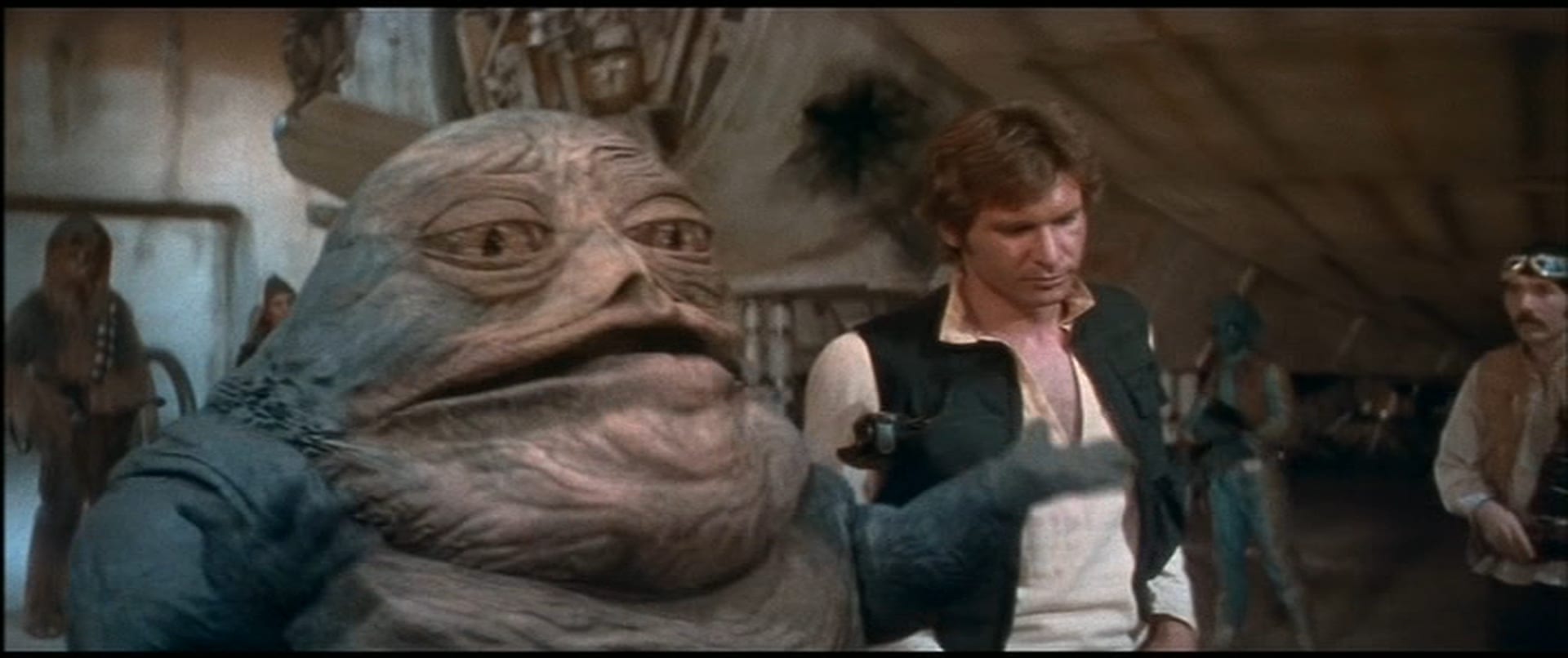Chewielewis said:
But it shows that the lightsaber look can be attained by clipping the highlights.
Right, but that’s not good enough. You need to show the lightsaber AND the rest of the scene can be attained with some LUT. I’m certain it can’t because this was scanned from a different composite than the one used in the 1997 theatrical prints, one designed for telecine.
And there really is no point in recomposing this shot, as you can see from the colormatch the only real difference is the lightsaber looking WORSE.
Yes there is. I had to use DrDre’s tool to colour match - that luxury didn’t exist in 1997. I appreciate you haven’t seen how the shot looks with no correction applied at all so I’ll show you. See this screenshot which shows the dark background areas directly against the black frame borders with no colour correction. Compared to the TB broadcast, and the Jap Laserdisc, the entire reel is a lot brighter. The telecine operator would have needed to dial the brightness down, not up. And again I stress that the TB broadcast and the Jap Laserdisc are two separate transfers - they both look the same, and the new scan looks different.
Chewielewis said:
And subtitle shots are a different deal as the subtitles are not present on the interpositive which would have been scanned for this version. Subtitles are either cut or burn into internegatives so there are always clean versions of those shots avaliable. Clean versions aren’t made for the TV version they are made for international film prints.
My understanding is that they strike prints specifically for telecine, they don’t use the IP. Also, these subtitles were not burned in - they are optical composites, so would absolutely be present in the interpositive.
Why would they, finish the film, go back and change the intensity on the blades so they are blown out, create new film outs, telecine them, edit them into the video master, all at enormous expense for very little return.
Well 1. it wouldn’t have been at “huge expense” and 2. because they wanted the scene to look good on video. It’s the debut lightsaber scene, that’s why it looks the best in the entire film! They put the most effort into that one scene, and they wanted it to look as good on video as it did in the theatres.















